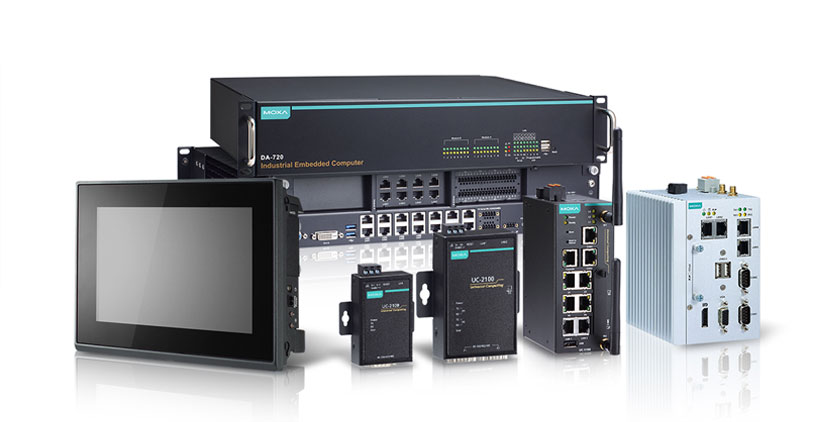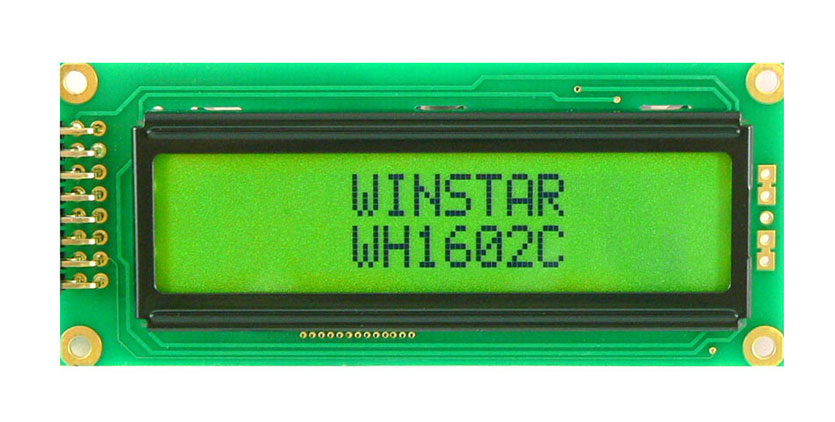Understanding LCD Technology
LCD monitors, or Liquid Crystal Display monitors, are flat-panel displays that use liquid crystals to produce images on the screen. They are widely used for various applications, including computer monitors, televisions, and other electronic devices. LCDs operate by manipulating the properties of liquid crystals, which are molecules that can change their alignment when subjected to an electric current. These crystals control the passage of light through the display, allowing for the creation of images. LCD technology offers several key advantages, including high resolution, sharp image quality, and reduced power consumption compared to older display technologies like CRT monitors. Additionally, LCD monitors are thinner, lighter, and more space-efficient, making them a popular choice for modern displays.
Types of LCD Monitors
- Industrial LCD Monitor with Aluminium Body
- Industrial-grade LCD monitors with a robust aluminum body designed for rugged environments and heavy-duty applications.
- Industrial LCD Monitors without Touch
- Industrial-grade LCD monitors without touchscreen functionality, suitable for applications where touch interaction is not required.
- LCD Monitors without Touch
- Standard LCD monitors without touchscreen capabilities, commonly used for regular computing tasks and display purposes.
- Touchscreen Industrial LCD Monitor with Aluminium Body
- Industrial-grade LCD monitors featuring a durable aluminum body and touchscreen capability, ideal for applications where touch interaction is necessary in demanding environments.
- Touchscreen Industrial LCD Monitors
- Industrial-grade LCD monitors with touchscreen functionality, designed for use in rugged environments and applications where touch interaction is essential.
- Touchscreen LCD Monitors
- Standard LCD monitors equipped with touchscreen capabilities, suitable for a wide range of interactive applications, including kiosks, POS systems, and more.
Factors to Consider When Buying an LCD Monitor
Here are the factors to consider when buying an LCD monitor:
Resolution and Aspect Ratio
- Resolution refers to the number of pixels displayed on the screen, affecting image clarity. Aspect ratio is the ratio of width to height, influencing the screen’s shape and suitability for different tasks.
Refresh Rate and Response Time
- Refresh rate measures how many times the screen refreshes per second, impacting motion smoothness, while response time indicates how quickly pixels change color, affecting blur and ghosting in fast-paced visuals.
Panel Technology and Viewing Angles
- Panel technology (e.g., IPS, TN, VA) affects color accuracy, contrast, and viewing angles. Understanding these technologies helps choose a panel type that suits your specific needs.
Connectivity Options
- Consider the available ports (e.g., HDMI, DisplayPort, USB) to ensure compatibility with your devices. Sufficient and diverse connectivity options enhance versatility.
Size and Ergonomics
- Size impacts the viewing experience and workspace utilization. Additionally, consider ergonomic features like adjustable stands or VESA mount compatibility for comfortable usage.
Color Accuracy and Gamut
- Color accuracy ensures that the monitor reproduces colours as accurately as possible. Gamut refers to the range of colours a monitor can display. These factors are crucial for tasks like graphic design, photo editing, and video production.
Considering these factors will help you make an informed decision when purchasing an LCD monitor tailored to your specific needs and preferences.
Understanding Display Calibration
Display calibration is a crucial process that ensures accurate and consistent color representation on your monitor. It corrects any deviations in color, brightness, and contrast to match industry-standard settings. This is particularly essential for professionals in graphic design, photography, and video editing, where color accuracy is paramount.
How to Calibrate Your LCD Monitor?
Calibrating your LCD monitor involves using specialized tools and software to adjust its settings. Here’s a basic guide:
- Acquire a Calibration Device: Invest in a colorimeter or spectrophotometer, which measures the color output of your monitor.
- Install Calibration Software: Install and run the calibration software that comes with your calibration device. Follow the on-screen instructions.
- Set Up Your Environment: Ensure consistent lighting conditions in your workspace. Avoid glare and harsh reflections on the screen.
- Connect the Calibration Device: Attach the device to your monitor according to the manufacturer’s instructions.
- Run the Calibration Process: The software will display a series of colours and shades. The calibration device will measure the actual colours produced by the monitor.
- Adjust Monitor Settings: Based on the measurements, the software will provide recommendations to adjust settings like brightness, contrast, and color levels.
- Save Calibration Profile: Once adjustments are made, save the calibration profile. This profile can be loaded each time you start your computer to ensure consistent display settings.
- Regular Recalibration: It’s recommended to recalibrate periodically, as factors like aging of the monitor or changes in ambient lighting can affect color accuracy.
By following these steps, you can maintain accurate and reliable color representation on your LCD monitor, ensuring your work is displayed as intended.
Comparing LCD to Other Display Technologies
LCD vs. LED: What’s the Difference?
- LCD (Liquid Crystal Display): LCD technology uses a backlight to illuminate the liquid crystals that form the images on the screen. It offers good image quality and energy efficiency, making it a popular choice for various applications.
- LED (Light Emitting Diode): LED displays also use LCD technology, but they use light-emitting diodes as the backlight source. This allows for more precise control over brightness and contrast, resulting in enhanced picture quality.
LCD vs. OLED: Pros and Cons
- LCD (Liquid Crystal Display): LCDs provide excellent color accuracy and are widely available in various sizes and resolutions. They are energy-efficient and well-suited for bright environments. However, they may have limited viewing angles and can suffer from backlight bleed.
- OLED (Organic Light Emitting Diode): OLED displays use organic compounds that emit light when an electric current is applied. They offer unparalleled contrast ratios, wider viewing angles, and incredibly vivid colours. However, they can be more susceptible to burn-in and have a higher cost.
LCD vs. Plasma: Which is Better?
- LCD (Liquid Crystal Display): LCDs are known for their energy efficiency and are often thinner and lighter than plasma displays. They also tend to have longer lifespans and are less susceptible to screen burn-in. However, they may have limited viewing angles compared to plasma.
- Plasma: Plasma displays use tiny cells filled with gas to create images. They offer superior black levels and excellent color reproduction, making them popular for home theatres. However, they tend to be heavier, less energy-efficient, and can suffer from screen burn-in over time.
Ultimately, the choice between LCD, LED, OLED, and plasma depends on your specific needs, preferences, and budget. Each technology has its own strengths and considerations that can impact your viewing experience.
Choosing the Perfect LCD Monitor with Royal Display
In the quest for the ideal LCD monitor, it’s crucial to partner with a trusted supplier. Royal Display stands as a beacon of reliability in the realm of LCD monitors. With a commitment to quality, they offer a diverse range of high-performance LCD monitor products tailored to meet various needs.
By considering factors like resolution, refresh rate, panel technology, and size, you can narrow down your options and find the perfect match for your specific requirements. Whether it’s for professional design work, immersive gaming, or everyday computing, Royal Display ensures that you’ll have access to top-tier LCD monitors that deliver outstanding visual experiences.
Investing in a Royal Display LCD monitor means investing in quality, durability, and performance. Explore their range of products today and embark on a journey towards unparalleled visual excellence. Elevate your viewing experience and unlock a world of possibilities with Royal Display’s premium LCD monitors. Contact Us Today!








